 Since my website includes an article about houseplants that are non-toxic to animals and people, it seemed wise to list poisonous plants as well. The list below is not comprehensive, but they include many common plants that you might be growing in your yard.
Since my website includes an article about houseplants that are non-toxic to animals and people, it seemed wise to list poisonous plants as well. The list below is not comprehensive, but they include many common plants that you might be growing in your yard.
If you would like a complete list, I recommend you go to the ASPCA site, as they have lists of both non-toxic and toxic plants. Oleander, which is pictured below, can be toxic for young children as well as pets, so be aware.
If you think your cat might have eaten something poisonous, you will soon find out. Some signs that he may have eaten something poisonous are vomiting and diarrhea.
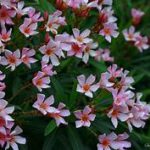
Here is the partial list of outside plants that are toxic. You might also have some of these plants inside, but they are commonly found in the outside yard. The first one on the list is the oleander, which is also known as rosebay. Latin name for oleander is Nerium oleander. This plant is one that is dangerous for both your children and your pets, as it is extremely poisonous.
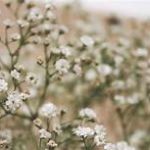
Baby’s breath, often used as a flower in bridal bouquets, is known as soapwort in the United Kingdom. The flowers may be white or pink, though white seems to be the color most used. The Latin name for this plant is Gypsophila. No wonder this flower is used in wedding arrangements. One of its meanings is everlasting and undying love. However, all parts are poisonous to your cat and can cause vomiting and diarrhea.
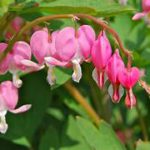
The next plant that is beautiful but poisonous is the bleeding heart. The Latin name of the most common bleeding heart is Dicentra spectabilis. The plant grows from two to three feet tall, and blooms in April or May. It is typically pink or white, though sometimes red. The pink or red blooms symbolize romantic love, while the white has the meaning of purity.
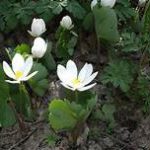
This lovely little poisonous plant is bloodroot, with the Latin name of Sanguinaria canadensis. Though poisonous if eaten, it becomes a medicinal plant when used properly. All parts of the plant can be used. The sap or a powder made from bloodroot can be used for many types of skin conditions. It has also been long used as an anticancer herb.
Perhaps you are familiar with Zantedeschia, or the calla lily.

The name comes from Greek, and means beautiful. The roots are the poisonous part of this plant. It grows in cool, temperate regions. Its lovely blossoms come in many colors: green, pink, purple, yellow and orange. The flowers are used in wedding arrangements or ornamental bouquets. The lily grows from a perennial bulb.
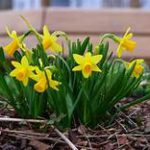
The daffodil is another plant grown from a bulb. It likes a moderate climate, and is one of the earliest plants to bloom in the spring. The trumpet-shaped flower is set in a ring of petals. The bulbs can be planted in large clusters. The genus for this plant is Narcissus. There are many species. The whole plant is poisonous to cats, but the bulb is most dangerous.
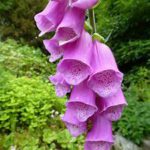
Our next beautiful but deadly plant is foxglove, known by the Latin name of Digitalis purpura. Though the plant is used to make a heart medicine, never ingest any part of the plant, as it is extremely toxic. It takes expert knowledge to prepare it as medicine. The plant is most toxic before the seeds open. It can even cause a reaction if you just inhale the pollen. As the plant is a biennial, to sow it, plant outdoors in the autumn, if possible.
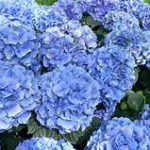
For beautiful, abundant flowers, it is hard to match the Hydrangea. This genus contains from 70 to 75 species of flowering plants. Most of these plants are shrubs, though some grow to be small trees. Don’t let your cat eat them, as the buds, flowers, and leaves can be poisonous. They are loved for their giant flower heads, which come in an assortment of colors, including blue, pink, white, lavender and rose. Sometimes you can find all these colors on one plant. I want one of those!
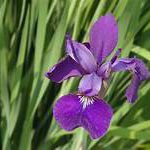
The iris is a flower that most people probably recognize. Its blossom is showy, with 3 interior petals that are upright and 3 outer petals that bend backwards. It is grown from bulbs or rhizomes. After they become established, they will clump and multiply. The sword-like leaves are also very attractive. The flower can be many different colors; iris in Greek means “rainbow.” The meaning of the flower is faith, wisdom, peace of mind, friendship and hope. In Alaska, our wild iris species is Iris setosa. The bulb of this plant is most poisonous, but your cat could sicken from ingesting any part.
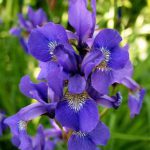
Our next poisonous plant is larkspur, or Delphinium consolida. This plant is a perennial, and has either white, blue, or pink flowers. The foliage of the plant is feathery. The meaning of larkspur is “fickleness.” Be wary — all plant parts are poisonous in large doses, especially the seeds.
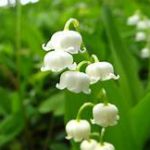
This lovely little white flower makes a wonderful ground cover, but all parts of the plant are quite toxic if ingested. The plant is the lily of the valley, or Convalleria majalis. Though highly poisonous, they are sweetly-scented. This tough little plant is an herbaceous perennial, a part of the asparagus family. A single flower stalk might have as many as 12 white, bell-shaped flowers on it. It has two basal leaves, wide at the bottom and tapering to a point. You might be wise to wear gloves when handling this plant, so you don’t get any part of it on food when you prepare your meal.
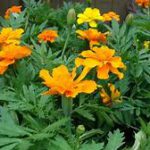
Here is one that is very familiar to me, as I always grow some each year to help keep insects away. The marigold, Tagetes species, also known as calendula, is an annual or perennial, with some 15 – 20 species. It can be grown from seeds. A member of the daisy family, it can be an annual or a perennial. Though it grows in several colors, the most common are yellow and orange. The plant may be used for skin problems, such as inflammation. It can be made into an ointment to treat the skin. If your cat eats a marigold, his mouth, skin and stomach may become irritated.
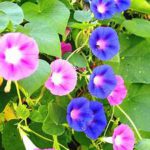
Many of us know the morning glory, from the genus Ipomoea. This plant can be a perennial in a warmer climate and an annual where the weather is cooler. It grows fast and tolerates poor soil conditions. It is a climber. One climbed up my garden fence in recent years. It has heart-shaped leaves, slender stems, and trumpet-shaped flowers. The blossoms can be pink, white, magenta, or purplish-blue. The vine can grow up to 15 feet in one season. It is attractive to butterflies and hummingbirds. The seeds are poisonous.

Another lovely plant that is poisonous to dogs and especially to cats is the tulip. The bulb is particularly poisonous, but if your cat chews on the green leaves, he could get sick. This spring-blooming perennial plant belongs to the genus Tulipa. Growing from a bulb, it has large, cup-like blossoms and tall single leaves that are larger at the base, and come to a point at the top. It has six petals. There are about 100 species of tulips. These flowers symbolize imagination, dreaminess, perfect love, and can be a declaration of love. Just don’t eat the bulb!
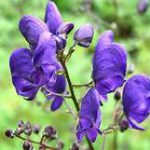
The last toxic plant I’ll share in this article is wolfbane, known in my home state of Alaska as monkshood. The Latin name is Aconitum. The genus has over 250 species. The attractive hooded flowers are blue, purple, white, yellow or pink. Leaves are deeply palmated lobes five to seven segments, each having coarse, sharp teeth. The roots contain a deadly poison that has been used by many groups for poisoning arrows for hunting or warfare. In Alaska, it was used by Aleut whale hunters to poison the tips of arrows. A large dose will cause death almost instantaneously.
This list is partial. For a more complete list, go to the ASPCA poisonous plant page. If your animal ingests one of these plants, and you have to visit the vet for treatment, be sure you take a piece of the plant with you for identification and proper treatment.
Most of the information in this article came from Wikipedia. The list of plants came from the site, www.wideopenpets.com. There are many more toxic plants, but these are some of the most common.

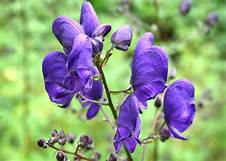
I really had no idea that there were so many lovely plants that are poisonous to cats, so this is very useful information. The one I was most aware of is the yellow blossom from a Laburnam tree which I know is poisonous to people so I guess it is to cats too.
Perhaps it is a very good job that cats are not naturally drawn to eat plants, apart from Catnip of course – or there would be far more incidents of poisoning in the cat population.
Your post is so useful, as before reading it I would not have considered that a plant could be responsible should my cat be obviously suffering from food poisoning.
Thank you so much for this information.
Chrissie 🙂
Many of the plants listed in the article are also poisonous to people. I have a friend right now suffering from oleander poisoning. It is good to know about such things. I think you are right — cats might not be harmed, but they could chew on something that would hurt them. They do like to chew on green stuff, now and them.
I am glad you found the information valuable. Thanks for your comment.
Thank you for a very informative post.
It’s very good to Know what we have around us. We all love flowers and their scent but we always ignore if they can be harmful for us or our pet. I have bookmarked your page to share with my family and friends. We all have pet and garden, so we need to know and keep safe.
I do have a question, if these flowering plants are poisonous to animals, are they also poisonous to people?
Thanks for sharing.
Flowers are wonderful, and sometimes they are poisonous to both people and animals. I would avoid consuming any of the plants on that list, just to make sure. I know some of them are very bad for people as well.
There is another article on my website about plants that are safe to grow inside. These are plants that are totally nonpoisonous, so you can rest easy if you bring them in your house. You might like to look at that one, too, as there are actually a lot of plants that are safe.
It shows from your post that there many flowers out there which are poisonous.
is there a way besides the sources that you have mentioned above , of establishing if a plant or flower is poisonous?
And what is the procedure to follow when you realize that your cat or Child has been poisoned .
thank you for the resources that you have shared on the comprehensive list of Flowers , its quite detailed .
Thanks Again
Yes, there are many flowers that are poisonous, and it is good to be aware of them. If you want a much more complete list, I’d recommend going to the ASPCA website. There are also many references on plants that can tell you if a plant is poisonous or not.
If your cat or child has been poisoned, go to the vet or the emergency room right away. Take along enough of the plant so that it can be identified, unless you are absolutely sure what it is.
There is another story on my website that you might enjoy. It’s about the plants that are safe to have in your house, because they are not harmful to pets or people. The link for that story is https://celebratingcats.com/wh…
It shows from your post that there many flowers out there which are poisonous.
is there a way besides the sources that you have mentioned above , of establishing if a plant or flower is poisonous?
And what is the procedure to follow when you realize that your cat or Child has been poisoned .
thank you for the resources that you have shared on the comprehensive list of Flowers , its quite detailed .
Thanks Again
Thanks for your questions. Other than looking up a plant reference, I don’t know a way. I know the ASPCA has a pretty complete list. You might find that helpful to keep on hand.
If your cat or child has been poisoned, go to the vet or emergency room immediately. If you know what the cat or child has eaten, take a piece of the plant along so that the caregiver can find out what plant it is. When you take in a plant specimen, get enough of it so it can be identified — leaf, stem, even root; any flowers or seed pods.